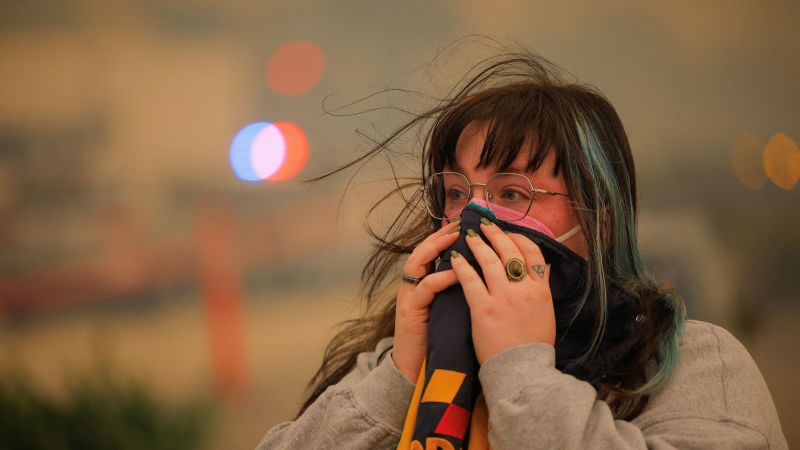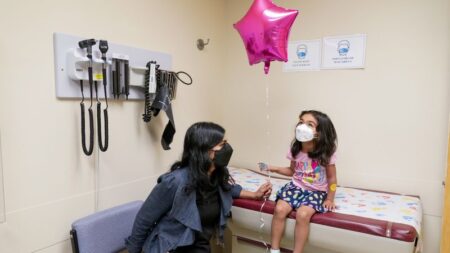In the aftermath of the recent wildfires impacting Los Angeles, health authorities and experts are urging residents to prioritize their safety upon returning to homes that may have escaped physical destruction. The Los Angeles wildfires brought more than just the threat of flames; they released hazardous smoke and ash, which contain a plethora of toxic chemicals detrimental to health. This lingering pollution doesn’t simply vanish with the fire’s end; rather, it infiltrates structures, even those that appear intact, creating serious health risks for occupants. As residents proceed with cleanup efforts, the air quality inside homes should be of utmost concern, necessitating cautious measures.
Katherine Pruitt, the national senior director for policy at the American Lung Association, highlighted the invisible dangers lurking in seemingly undamaged homes. She stresses that even absent visible damage, the air quality within these structures could be gravely compromised. Toxic particles, smoke, and ash can permeate barriers and create an unsafe breathing environment. Ash, in particular, poses a significant risk, having the potential to irritate the lungs, eyes, and skin upon contact. Given the declaration of a local health emergency by Los Angeles Public Health, residents are cautioned against using air blowers, which can spread ash and particulate matter further, exacerbating health risks.
The consequences of wildfires extend beyond the immediate destruction of vegetation; they include contamination resulting from burned materials such as cars and buildings, which release harmful chemicals into the environment. Once absorbed by interior surfaces—walls, floors, and furniture—these toxic substances can continue to emit pollutants for weeks or months, posing ongoing threats to those exposed. Studies indicate that this off-gassing diminishes over time, but until it does, residents are advised to exercise caution.
Furthermore, wildfires contribute significantly to the existing air pollution issues in the Los Angeles area, which has consistently ranked among the top cities for year-round particle pollution. The American Lung Association’s “State of the Air” report for 2024 emphasizes that the region has long been plagued by ozone pollution, complicating matters in the wake of wildfires that can elevate air quality index levels to “unhealthy”.
Health experts have discovered that the fine particle pollution resulting from wildfires can be more damaging to the respiratory system than particles from other sources. Exposure can trigger a multitude of symptoms, including respiratory distress, eye irritation, and other complications, especially for vulnerable populations. Studies, such as one focusing on the 2021 Marshall Fire in Boulder, Colorado, found troubling levels of metals and polycyclic aromatic hydrocarbons (PAHs) lingering in homes long after the fire had subsided, with some residents experiencing persistent smoke-related health issues for months afterward.
As cleanup begins, precautions are fundamental. The Environmental Protection Agency (EPA) recommends regular checks and replacements for HVAC filters to ensure clean indoor air. Additionally, using high-efficiency filters and running HVAC systems in a continuous mode can improve air quality within homes. Portable air cleaners equipped with HEPA filters are also recommended, especially in spaces where inhabitants spend considerable time. Following this guidance can help mitigate the adverse effects of residual smoke and ash.
Moreover, specific cleaning practices can significantly reduce exposure to particulates. The EPA advises against the use of traditional vacuums and brooms that might disturb the fine particles. Instead, utilizing a vacuum with a HEPA filter while misting surfaces with water before cleaning can limit airborne pollutants. It is crucial to don protective gear such as gloves, goggles, and respirators, specifically N95 or P100 masks, which are more effective at filtering out harmful particles compared to standard cloth or surgical masks.
Given the potential for long-term health consequences, this cautionary approach extends to individuals with pre-existing respiratory or cardiovascular conditions, as well as the elderly, children, and pregnant individuals, who may experience greater difficulty in clearing pollutants from their systems. Their participation in cleanup tasks should be minimal, and pets also need to be kept clear of ash to protect their health.
As a final note, regular breaks for fresh air while cleaning are encouraged, ensuring that residents don’t compromise their well-being in their efforts to return to normalcy. If symptoms like breathing difficulties arise, consulting with a healthcare provider before continuing cleanup is essential. Adopting these various preventive measures will not only ensure a safer living environment but will also help mitigate the health risks presented by the aftermath of the Los Angeles wildfires.












